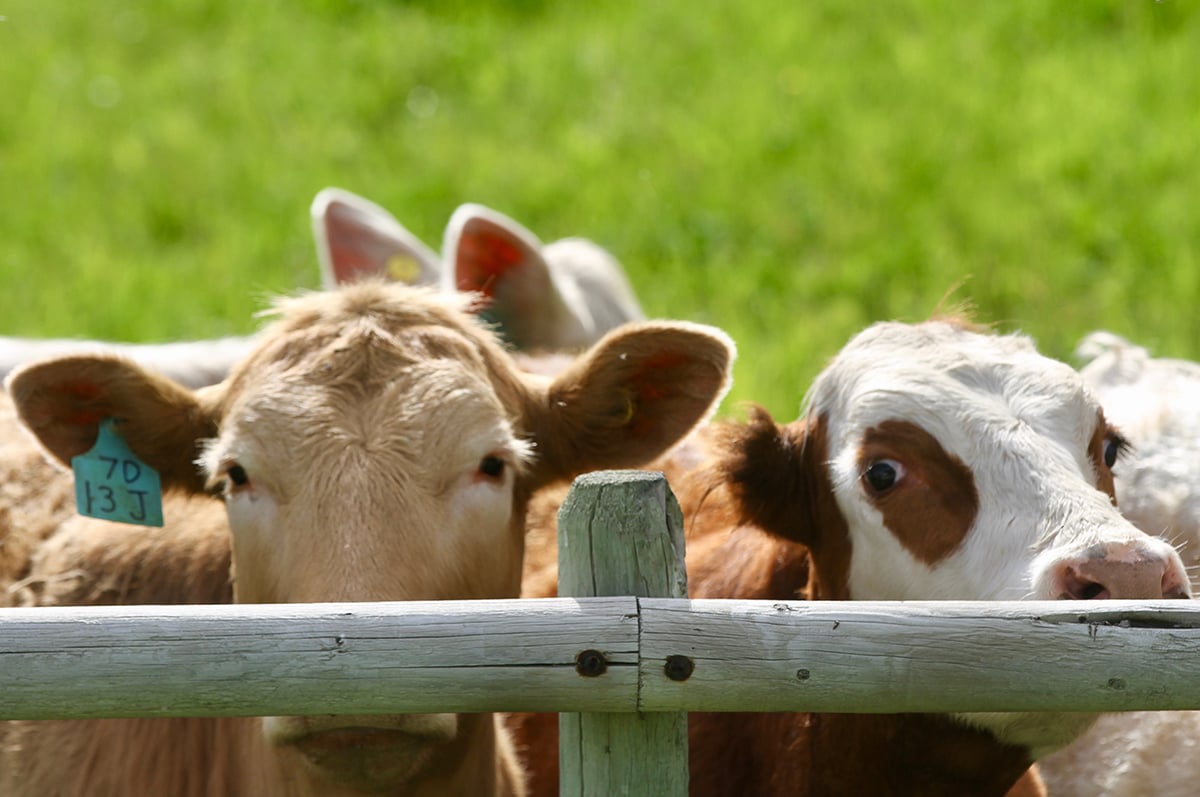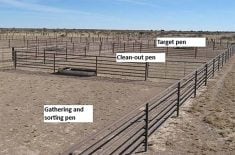Three out of every 1,000 heifers may fail a dentition test and be placed in the over 30-months-old category, even though their chronological age is lower.
“We were expecting to see more failure rates, especially when the bulk of the yearlings started coming through the system,” said Gene Rawe, animal health specialist with the Alberta Beef Producers.
Alberta Beef has been collecting data on teeth from three large Canadian packers since Dec. 1 to measure how many cattle going to slaughter fall into the mature category.
Dentition is the internationally recognized system for determining the age of cattle. However, based on the maturity of the animal, the critical third incisor may have erupted earlier and that steer or heifer could end up in the over 30 month category at the packing plant.
Read Also

Feeder market consolidates at historic highs
For the week ending Sept. 6, Western Canadian feeder cattle markets were relatively unchanged compared to seven days earlier.
That means being processed with different tools and having specified risk materials removed. The meat is not eligible for export if it came from an animal deemed too old.
The United States started officially examining teeth Jan. 12 and a research team there is evaluating the results.
“It’s much better for our industry that they are doing dentition the same as we are,” said Rawe.
The beef producers reported that during the first three weeks of December, 60,400 steers and 73,300 heifers were slaughtered in Western Canada. To account for Christmas week, it was assumed that an additional 45,000 head would be slaughtered with the same steer-heifer ratio.
This would provide for a total slaughter of 79,000 steers and 96,000 heifers. The unusually high heifer to steer ratio is consistent with producers holding back cull cows and marketing higher value heifers.
Between Dec. 1-27 inclusive, 450 fed cattle failed the dentition test but 366 of these graded either in the A grade series or Prime. These 366 animals all met the maturity standard based on bone ossification. Another 84 animals failed the bone ossification test so 81 graded as D or were not graded at all.
Rawe said the dentition standard is sufficient criterion for steers. They have been raised for the sole purpose of going to slaughter so they are likely well under the age requirement.
Heifers may start to mature sooner and show advanced dentition at a younger age. Some failing the dentition test may have had a calf and were fed out after the calf was weaned.
The study suggested that a system that combines dentition with grade maturity standards would benefit both producers and packers and satisfy certification authorities.
Yet as producers work through this new system, some have been caught off guard and received a much smaller cheque than expected.
In some cases plants handling mature animals such as cull cows and bulls do not normally check the teeth because they are obviously older, said Claude Boissonneault, head of red meat programs at the Canadian Food Inspection Agency.
“If you are sending cattle to those establishments and it is a youthful animal, you may get penalized,” he said.
He suggested people sending animals to a plant where a dispute could arise should make sure the animals are properly identified so the final payment can be appealed. If a small load of young cattle came in with a larger group of mature animals, the operator may assume all animals are in the same older category.
“If I were a producer, I would make sure the operator knows I know they are youthful animals. It is up to the producer to make his case,” Boissonneault said.
Plants handling fed steers and heifers check them all. A plant employee examines the mouths for the third tooth and a meat inspector later verifies the results.















